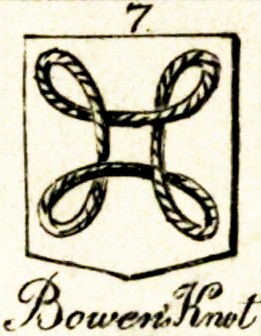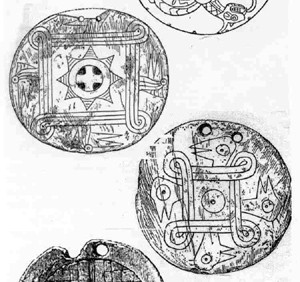syn·site
in Robert Smithson's terms*: (a partially generated and generative theory) The Synsite (an entangled situating) is an inter-dimensional picture that is amorphous, and yet it represents an interweaving of actual and virtual sites (an amalgamation of the Pine Barrens Plains, ML-scene processing, and the hyper-saturated yellow-green of a pool of disintegrated oak pollen, for instance). It is by this inter-dimensional metaphor that one entangled situating can represent another entangled situating, which does not resemble it—thus The Synsite. To comprehend this language of situating is to appreciate the metaphor between the syntactical construct and the complex of ideas, permitting the former to operate as a inter-dimensional picture that doesn't look like a picture. ... Between the actual-virtual sites in their respective planes and The Synsite itself exists a metaphoric space of collapsible significance. Perhaps "travel" through this space is a boundless metaphor. Everything in and between the entangled situatings could transform into physical metaphorical material devoid of natural meanings or realistic assumptions. Let us say that one embarks on many fictitious journeys at once if one decides to seek the site of the Synsite. Each “journey” is invented, devised, artificial; one might call it a syn-trip to a site from a Synsite. Once one arrives at the “assembly,” one discovers that it is man-made in the form of a network, and that she mapped this network in an aesthetic and temporal entanglement rather than specific political or economic boundaries.
This revisited theory is currently collaborative but could be surrendered to the faceless corpus of AGI at any time. Like the sources they scrape, theories are also both used and abandoned. That theories are constant is dubious; that sources are singularly credited is increasingly doubtful. Vanished theories compose the dense data layers of countless LLMs.
in Robert Smithson's terms*: (a partially generated and generative theory) The Synsite (an entangled situating) is an inter-dimensional picture that is amorphous, and yet it represents an interweaving of actual and virtual sites (an amalgamation of the Pine Barrens Plains, ML-scene processing, and the hyper-saturated yellow-green of a pool of disintegrated oak pollen, for instance). It is by this inter-dimensional metaphor that one entangled situating can represent another entangled situating, which does not resemble it—thus The Synsite. To comprehend this language of situating is to appreciate the metaphor between the syntactical construct and the complex of ideas, permitting the former to operate as a inter-dimensional picture that doesn't look like a picture. ... Between the actual-virtual sites in their respective planes and The Synsite itself exists a metaphoric space of collapsible significance. Perhaps "travel" through this space is a boundless metaphor. Everything in and between the entangled situatings could transform into physical metaphorical material devoid of natural meanings or realistic assumptions. Let us say that one embarks on many fictitious journeys at once if one decides to seek the site of the Synsite. Each “journey” is invented, devised, artificial; one might call it a syn-trip to a site from a Synsite. Once one arrives at the “assembly,” one discovers that it is man-made in the form of a network, and that she mapped this network in an aesthetic and temporal entanglement rather than specific political or economic boundaries.
This revisited theory is currently collaborative but could be surrendered to the faceless corpus of AGI at any time. Like the sources they scrape, theories are also both used and abandoned. That theories are constant is dubious; that sources are singularly credited is increasingly doubtful. Vanished theories compose the dense data layers of countless LLMs.
SYN (along with, at the same time | from Greek SYN, with | ~SYNTHETIC) + SITE (N: point of event, occupied space, internet address; V: to place in position | from Latin SITUS, location, idleness, forgetfulness | ~WEBSITE ¬cite ¬sight), cf. SITE/NON-SITE (from Robert Smithson, A PROVISIONAL THEORY OF NONSITES, 1968)
site (n.)
. . . directly from Latin situs "a place, position, situation, location, station; idleness, sloth, inactivity; forgetfulness; the effects of neglect," from past participle of sinere "let, leave alone, permit."
site (n.)
. . . directly from Latin situs "a place, position, situation, location, station; idleness, sloth, inactivity; forgetfulness; the effects of neglect," from past participle of sinere "let, leave alone, permit."
site (n.)
. . . directly from Latin situs "a place, position, situation, location, station; idleness, sloth, inactivity; forgetfulness; the effects of neglect," from past participle of sinere "let, leave alone, permit."






With only a few days left before deadline, the team's bitmap artist Susan Kare started researching for the Apple logo's successor. She was browsing through a symbol dictionary when she came across the cloverleaf-like symbol, commonly used in Nordic countries as an indicator of cultural locations and places of interest [...] Kare states that it has since been told to her that the symbol had been picked for its Scandinavian usage due to its resembling the shape of a square castle with round corner towers as seen from above looking down.
With only a few days left before deadline, the team's bitmap artist Susan Kare started researching for the Apple logo's successor. She was browsing through a symbol dictionary when she came across the cloverleaf-like symbol, commonly used in Nordic countries as an indicator of cultural locations and places of interest [...] Kare states that it has since been told to her that the symbol had been picked for its Scandinavian usage due to its resembling the shape of a square castle with round corner towers as seen from above looking down.
With only a few days left before deadline, the team's bitmap artist Susan Kare started researching for the Apple logo's successor. She was browsing through a symbol dictionary when she came across the cloverleaf-like symbol, commonly used in Nordic countries as an indicator of cultural locations and places of interest [...] Kare states that it has since been told to her that the symbol had been picked for its Scandinavian usage due to its resembling the shape of a square castle with round corner towers as seen from above looking down.











